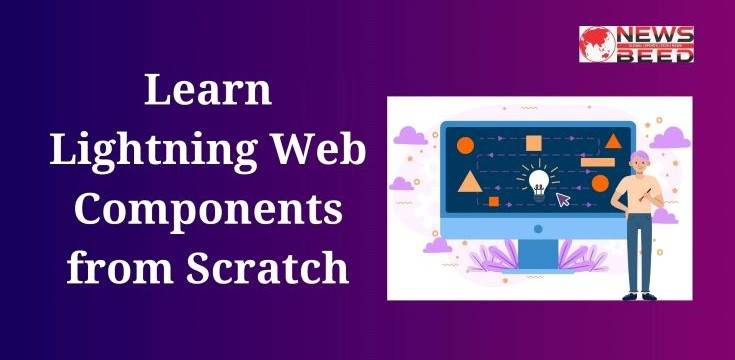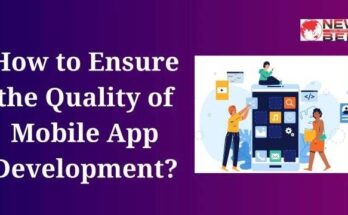Learning Salesforce Lightning Web Components (LWC) from scratch involves understanding several key areas: the fundamentals of web components, the architecture of Salesforce LWC, and how to develop and deploy basic LWC applications in a Salesforce environment. This comprehensive guide will walk you through these areas step-by-step.
Table of Contents
Toggle1. Understanding Web Components
Web components are a set of web platform APIs that allow you to create reusable custom elements — with their functionality encapsulated away from the rest of your code — and utilize them in web apps. Web components are based on four main standards:
- Custom Elements: These are the building blocks of web components, allowing developers to define their own elements with custom behavior and properties.
- Shadow DOM: This provides encapsulation for the markup and styles of web components. It keeps the component’s styles and markup isolated from other parts of the app.
- HTML Templates: The
<template>and<slot>elements enable you to write markup that is not displayed in the rendered page until activated by JavaScript. - ES Modules: JavaScript modules that allow you to structure and organize your code efficiently.
2. Introduction to Salesforce Lightning Web Components
Salesforce LWC is a lightweight framework built on web standards. It simplifies customer relationship management (CRM) UI development by utilizing modern web standards and can coexist and interoperate with the original Aura framework.
Key concepts in LWC include:
- Component-based architecture: Building UIs with small building blocks (components) that encapsulate functionality.
- Reactivity: Automatic updates of the UI when the state of a component changes.
- Data binding: Syncing data between components and Salesforce data sources.
3. Setting Up Your Development Environment
Before you start coding, you need to set up your development environment. The essential tools include:
- Salesforce CLI (Command Line Interface): This tool manages the Salesforce codebase, runs tests, and deploys code.
- Visual Studio Code: Recommended IDE for LWC development with the Salesforce Extension Pack installed.
- Salesforce Extension Pack: Includes tools and extensions specific to Salesforce development.
4. Your First Lightning Web Component
To create your first component:
- Create a LWC component: Use the Salesforce CLI or the Developer Console. A basic component consists of three files:
myComponent.js– The JavaScript controller with the component’s logic.myComponent.html– The HTML template.myComponent.css– The CSS file for styles.
- Add markup and logic: Use HTML for structure and JavaScript for functionality. LWC supports modern JavaScript (ES6+).
- Deploy and test your component: Use the Salesforce CLI to deploy your component to a Salesforce org and test it.
5. Understanding Data Binding and State Management
Data binding in LWC is straightforward:
- Properties: Decorate properties with
@trackto make them reactive. Changes in these properties trigger the UI to re-render. - Wired services: Use
@wireto automatically wire Apex class methods, Salesforce data, or custom Apex methods to your component.
6. Working with Salesforce Data
To interact with Salesforce data:
- Apex: Salesforce’s proprietary language for back-end logic. Use
@wireto call Apex methods and manage data. - SOQL: Salesforce Object Query Language for querying records.
7. Event Handling
Components communicate using events. There are two types of events:
- Component events: Used for communication between child and parent components.
- Application events: Used for communication across any components within the application.
8. Testing and Debugging
Testing is crucial for maintaining robust applications.
- Jest tests: Write unit tests for your LWC components.
- Salesforce DX: Provides tools for continuous integration and delivery (CI/CD), allowing you to test and deploy code efficiently.
9. Deployment and Best Practices
Finally, deploy your components:
- Using Salesforce CLI: Deploy your components directly into a Salesforce org.
- Best practices: Maintain clean code, follow naming conventions, and write modular, reusable code.
10. Why Use LWC?
- Performance: LWC is built on top of modern web standards, making it faster and more efficient compared to traditional frameworks that rely on older technologies.
- Standards-Based: It uses standard JavaScript and HTML, making it easier for developers familiar with these technologies to adapt and start developing.
- Interoperability: LWC components can work alongside Aura components and other web standards-based components, providing flexibility in development.
- Tooling: Robust development tools like Salesforce DX, Visual Studio Code extensions, and browser developer tools support LWC.
You May Also Read:
What is Digital Marketing in Hindi
SEO Interview Questions and Answers
11. Continuing Your Learning Journey
Keep up-to-date with Salesforce releases, join developer forums, and practice building different types of applications. Salesforce Trailhead provides interactive learning paths and modules to advance your skills further.
By following these steps, you will gain a solid foundation in Salesforce LWC, enabling you to build dynamic and scalable applications on the Salesforce platform. As you continue to learn and grow, you will discover more advanced techniques and tools that Salesforce offers, further enhancing your development skills.
FAQs:
1. What are Lightning Web Components?
Answer: Lightning Web Components are a modern framework for building fast, scalable web applications using standard web technologies like HTML, JavaScript, and CSS. LWC is part of the Salesforce ecosystem, designed to simplify the development of components that integrate smoothly with Salesforce data and services.
2. How do I start learning Lightning Web Components?
Answer: To start learning LWC, you should have a basic understanding of HTML, JavaScript, and CSS. Salesforce provides comprehensive resources, including:
- Trailhead: Salesforce’s free, gamified learning platform that offers modules and projects specifically for LWC.
- Documentation: Salesforce’s official documentation and developer guides provide detailed instructions and best practices.
3. What tools do I need to develop LWC?
Answer: You’ll need:
- Salesforce DX: A powerful command line tool for Salesforce developers.
- Visual Studio Code: Recommended editor with an official Salesforce extension for LWC development.
- Salesforce Sandbox or Scratch Org: Environments for safe development and testing of your components.
4. How do Lightning Web Components interact with Salesforce data?
Answer: LWC can interact with Salesforce data using:
- Apex Methods: Custom classes and methods that can be called from your components.
- Wire Service: A reactive mechanism for retrieving data from Salesforce using standard or custom objects without writing Apex code.
5. What are the best practices for developing Lightning Web Components?
Answer: Some best practices include:
- Encapsulation: Keep component logic self-contained to ensure components are reusable and easy to maintain.
- Performance Optimization: Use efficient data binding and event handling to enhance component performance.
- Testing: Regularly test components using Jest to ensure reliability and functionality.
6. Are there any communities or forums where I can learn more about LWC?
Answer: Yes, the Salesforce developer forums, Stack Exchange, and local Salesforce Developer Groups are great resources for getting help, sharing knowledge, and networking with other developers.
7. What are some common challenges when working with LWC?
Answer: New learners often face challenges such as:
- Understanding the Lifecycle Hooks: Knowing when and how to use connected Callback, rendered Callback, etc.
- Managing State: Efficiently tracking and reacting to changes in data or UI state.
- Integration with Advanced Salesforce Features: Implementing complex business logic and handling large data volumes.




